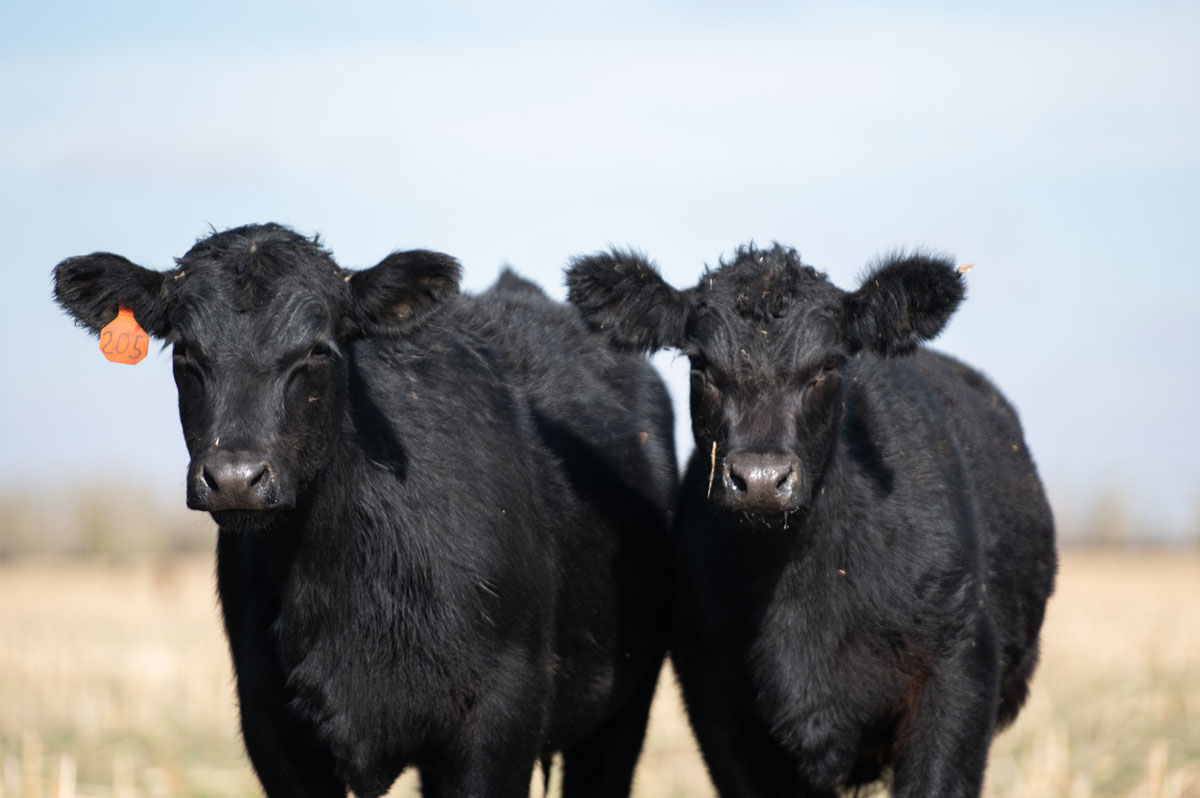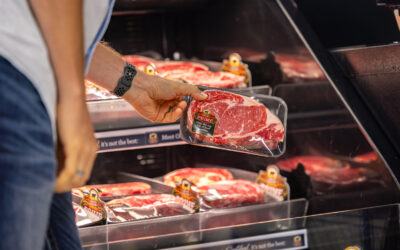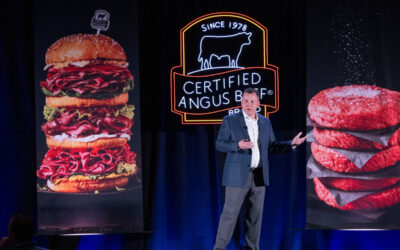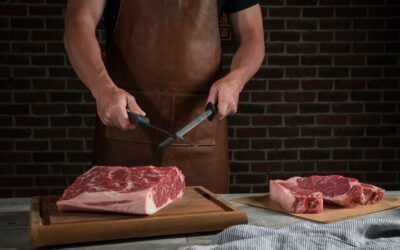
The market or the management– which comes first?
A modern day chicken-or-egg question
by Miranda Reiman
June 8, 2021
The crystal ball is nonexistent. There is no magic fortune teller. No matter how good the market forecast nobody is right 100% of the time.
That doesn’t mean cattlemen have to look at the future as nothing more than a blind guess.
In the ever-changing cattle marketing world, where more information is better and the bar keeps lifting higher, what’s the next thing that brings additional revenue? How does a producer know if it’s a flash in the pan or a long-term trend?
“You’re always trying to understand the future and moving to where the future will be,” says Ken Odde, former Kansas State University animal science department head. “But at the same time, you have to recognize if you get too far ahead of the trends, it may be at an economic loss for you as well.
“I would describe it as a balancing act.”
When Scott Whitworth, of Silver Bit Angus Ranch near May, Idaho, wants some direction, he takes a look at what’s already gaining traction. He turns to feeder-calf sale reports.
“It’s kind of like taking a test when you have a copy of what the questions are going to be,” he says
Somebody has to be first
Do you make a management change in good faith that the reward will grow, or do you respond to a strong market signal with a management change?
“I think there’s always an optimal time, but usually you only know that retrospectively, some time after the fact,” Odde says, noting experience on his family’s South Dakota cow-calf operation. “We probably stick our neck out further than most ranchers do and sometimes that turns out to be a good business decision, and sometimes it’s not such a good decision.
“But part of doing that is also the learning,” he says. “I don’t think you ever want to underestimate that because the more you participate, the more you learn and the more you learn, the more you know and the better decision maker you are in subsequent years.”
As a researcher, Odde has worked with Superior Livestock Auction data for more than 25 years. He says the introduction of the value-added calf 45-day (VAC-45) weaning program in the mid-1990s makes a good case study.
“The evidence is pretty clear that weaned and vaccinated calves are lower health risks,” he says, yet they aren’t bulletproof. The market had to decide how much that risk reduction was worth.
An analysis spanning more than 80,000 lots from 1995 to 2018, shows the original $2.47 per-hundredweight (cwt.) premium peaked at $10.24/cwt. in 2015 before leveling off to $6.19/cwt. in 2018.
“Since then, the premium has really stayed pretty much the same, pretty stable for several years now,” he says.

It’s an indication the market found out how much cattle feeders value that health protocol, Odde says.
The premium quadrupled at the same time that the number of cattle qualifying was still on an upward incline.
In 1995, only 3% of all lots sold through that video company qualified for VAC-45. Two decades later, that had grown to just under 30%. In that same time period, the percent of non-weaned lots with no vaccinations went from 40% down to zero.
Commercial cattlemen responded, Odde says.
Added work, added value
Whitworth was one of them. The first “program cattle” he marketed out of his commercial herd carried the VAC-45 designation, and after that he signed his registered Angus ranch up as a Superior Progressive Genetics Program and became a rep for the video auction.
“We were able to see what other people were doing, the premiums they were bringing on Superior,” Whitworth says. Today, he also uses AngusLinkSM to enroll his own cattle in source-and-age verification (SAV), non-hormone treated cattle (NHTC), and Global Animal Partnership (GAP) 4.
Whitworth helps market 13,000 commercial Angus cattle each year.
“Another rep told me he had every one of his customers signed up on the programs, and I thought that was a model for us to try to achieve, to bring more value to our customers,” he says.
Most are using some sort of process verified program (PVP). Whitworth grants it is more paperwork but they often report an extra $80 to $120/head above the market.
“Once they get in and get a premium, nobody has quit doing these programs,” he says.
Deciding where to go
That doesn’t mean it’s a cookie-cutter approach
“The size of the premium necessary to change the behavior is always going to vary, because every ranch is in somewhat of a different situation,” Odde says.
Labor, facilities, marketing method and premiums all figure into the decision. A large Western ranch may have more difficulty implementing a process than a smaller Midwestern spread. A bigger herd may capitalize on economies of scale, while a smaller outfit has fewer animals to spread the initial fee across.
“You can’t chase every rabbit hole, but you’ve got to figure out what makes sense,” Odde says.
Troy Marshall, director of commercial industry relations for the American Angus Association® says that’s where a good cost-benefit analysis could help. “You can really look at your management, your marketing scheme, your goals, and see which of those programs fit.”
The steady and constant serve as good base decisions, a place to launch from.

“There are some hardcore things that you’ll always be rewarded for. That’s superior genetics and cattle that are going to perform for the segments after you in the feeding, packing and ultimately at the consumer level,” he says. “Those trends are long term and well established. There are economic drivers that are driving that bottom line and you can feel pretty comfortable embracing those.”
Quality grade has climbed rapidly in the last decade with more than 70% of the fed cattle supply hitting Choice in 2020. The Certified Angus Beef ® (CAB®) brand regularly represents more than one-fifth of the total (more than one-third of eligible black hided), and Prime has been as high as 12%. Last year, the percentage of cattle grading top Choice and Prime added up to more than 40% of fed cattle and at the same time, cutout premiums for Prime or CAB continue at $15 to $20.
Marshall says that’s clear direction.
“I’ve always been amazed at how efficient our marketplace really is at assigning value and responding to consumers, even though we give it a lot of grief sometimes,” he says.
But what’s next?
“Traceability, sustainability and animal welfare—they are probably going to be the next wave,” Marshall says. “I can’t tell you what those metrics are going to be, but early adopters are going to be more positioned to take advantage of it.”
Those who are already involved in record keeping and verification stand ready to capitalize.
“You’re used to documenting it. You’ve already started to gain reputation with those buyers,” he says. “There are dollars to be had out there.”
This is the first year Odde will use AngusLinkSM and GAP 4 enrollment on his herd.
“If we go to the work that we think we need to do to qualify,” he asks, “is that going to be something that in the long term is going to be beneficial? Do we think that’s going to be something lasting?”
History helps inform the future. When the animal scientist started working with Superior data there were a dozen attributes to sort on, such as weight, color and sex. Today there are 26.
“We continue to describe feeder cattle more precisely than we ever used to describe them,” he says.
It’s not a crystal ball, but a strong signal: more information will continue to be more valuable. There’s no need for a fortune teller for those at the ready.
Originally ran in the Angus Journal.
You may also like
CAB Sets Sales Records, Sees Historically High Brand Acceptance Rates
In an otherwise tough time in the beef business, sales and supply records have been a bright spot. The positive numbers mean that quality beef production has not let up, and beef demand is holding. Consumers have proven the value proposition: the good stuff is worth a little more money, for a better eating experience.
Making Sense of Supply, Pricing and Navigating the Market
Amid anticipated shifts in cattle supply and evolving market dynamics, CAB remains well-positioned to navigate the beef sales road ahead. Clint Walenciak addressed how producer profitability, strategic specification adjustments, and resilient demand will help stabilize the brand’s beef supply chain through herd size and pricing shifts in 2025 and beyond.
Thriving with Shrinking Supply
Even as the nation’s cow herd contracts, “more pounds” and “higher quality” have been common themes. Specific to commercial cattlemen: It still pays to focus on carcass merit, in addition to other economically relevant traits.



